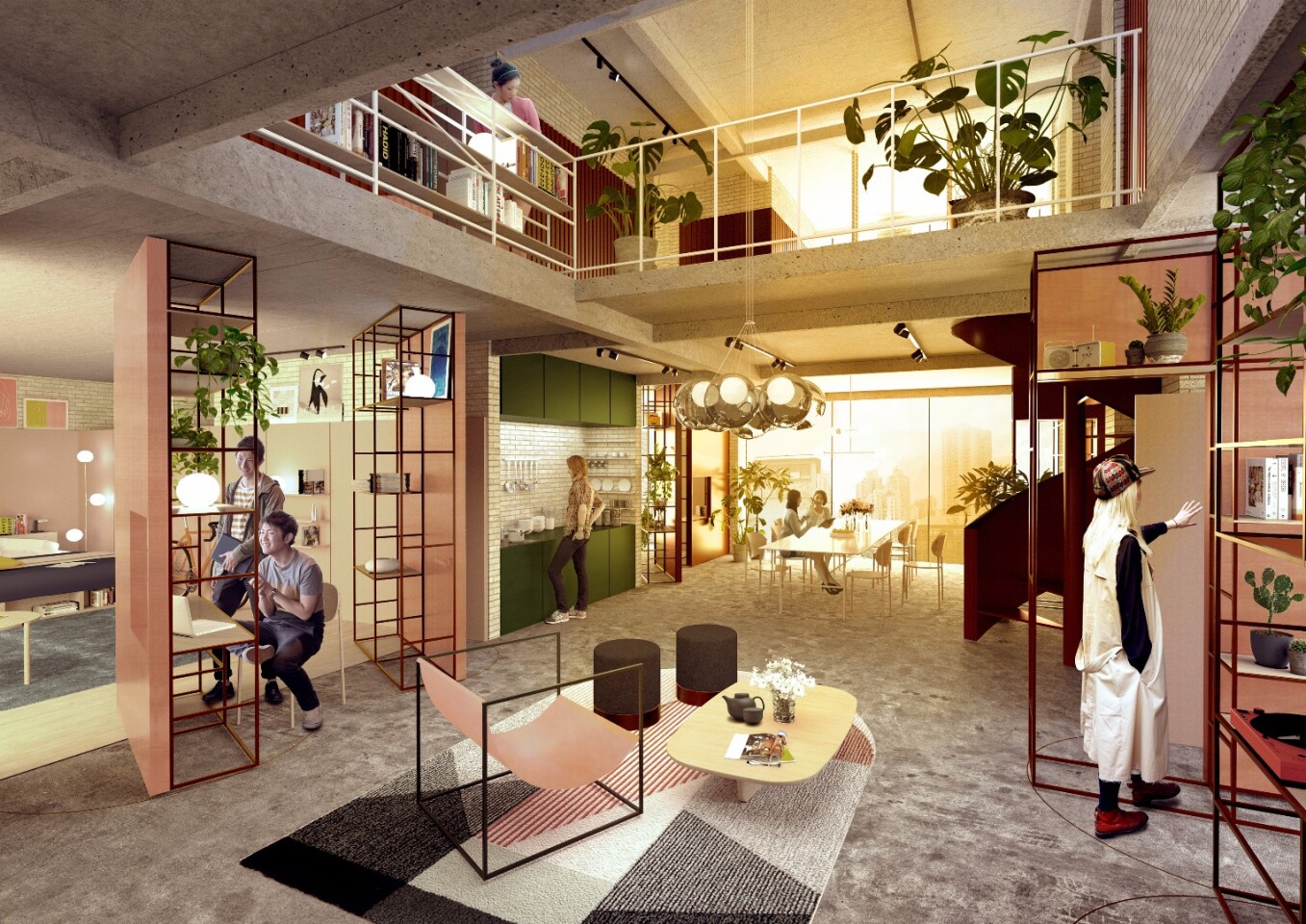MINI revealed its first Mini Living concept apartment installation at Salone de Mobile in Milan last year, featuring folding modules to create a shareable, reconfigurable space for inner-city habitation. This was followed this year at the same event by the eco-minded three-floor "Breathe" house installation, which was squeezed into a 50 sq-m (538 sq-ft) urban plot. Now, for the first time, the company will be going beyond concepts with an actual building project in Shanghai.
In partnership with Chinese project developer Nova PropertyInvestment Co., Mini is set to convert an abandoned paint factory in theJing'An district of Shanghai. TheMini Living project will see the site and existing buildingsconverted into a series of tiny apartments, co-working spaces andcommunal facilities, with the addition of cultural activities,rooftop farming and car-sharing.
"Mini has always addressed the challenges and needs of people living incities," Oke Hauser, Creative Lead at Mini Living tells NewAtlas."Mobilityin cities never takes place in a vacuum, but is part of the urbanenvironment as a whole. That's why the idea of transferring Mini'sexpertise from the automotive sector to architectural concepts forurban living – and therefore starting the initiative Mini Living –have seemed like a natural progression. Withthe project in Shanghai, the concept ideas are incorporated into anactual co-living project."
Theproject in Shanghai features a unique design that drawsupon the city's rich heritage and present urban landscape. Materialssuch as brick and wood will be used to reflect traditional Chinesearchitecture alongside shiny, colorful surfaces to add a contemporaryfeel to the structure.
Agroup of six buildings will be transformed to include a series ofliving clusters made up of two to 10 units each, featuring communalliving and kitchen zones. The idea is that small private apartmentswill be complemented by larger shared-use zones. The hub will alsofeature exhibition areas, a food market, gardens, play areas, shopsand restaurants. In addition, theshared lobby space and roof terraces have been designed to provide aninviting social environment for the community as a whole to cometogether and connect.
"Byconverting an existing building structure, Mini Living is making animportant contribution to sustainability – unlike with a newbuild," says Hauser. "Planting ofvegetation on the roof terrace and front facade, for example, helpsto improve the urban micro-climate. The roofs offer "urban farming"potential, i.e. the chance for residents to grow their own food."
There are plans to include two different sized apartment options. Asmaller one-bedroom apartment design will have access to the shared kitchenand community areas, while a larger two-bedroom apartment will haveits own private kitchen included. Additional rooms and guests roomswill also be available to tenants and can be booked for visitingfriends, family or short-stay guests. Each living cluster will alsohave additional facilities and rooms available for private bookings,such as private spa, a kitchen, working and eating spaces.

"Theplan is also to integrate transformative and moving interior detailsinto the apartments that allow residents to share the functions oftheir units with the communal space," says Hauser. "Bookablerooms for work, events, sport and spa facilities will be available ona flexible basis to suit each resident's needs and lifestyle beyondtheir apartments. We're [also] planning the integration ofapproximately five to eight parking spaces into the complex for ReachNow [carsharing] vehicles that will only be Mini models."
Work is set to begin later this year,with the construction process spanning threemain steps. These include the removal of a small building to open thecompound to the public and provide a roofed plaza; the renovationprocess for the remaining buildings; and construction of circulation elements such as bridges and platforms to link thebuildings.
"Thegreatest quality of Mini Living in Shanghai is its ability to fit biglifestyles into a small footprint," says Hauser. "Based onthe creative use of space, Mini Living in Shanghai will offer compactand cleverly designed apartments embedded in the shared spaces of aninspiring community. Our design approach is based on a relativelysmall personal space without sacrifices; we believe you can "livesmall" and still have it all."
Source: BMW Group













